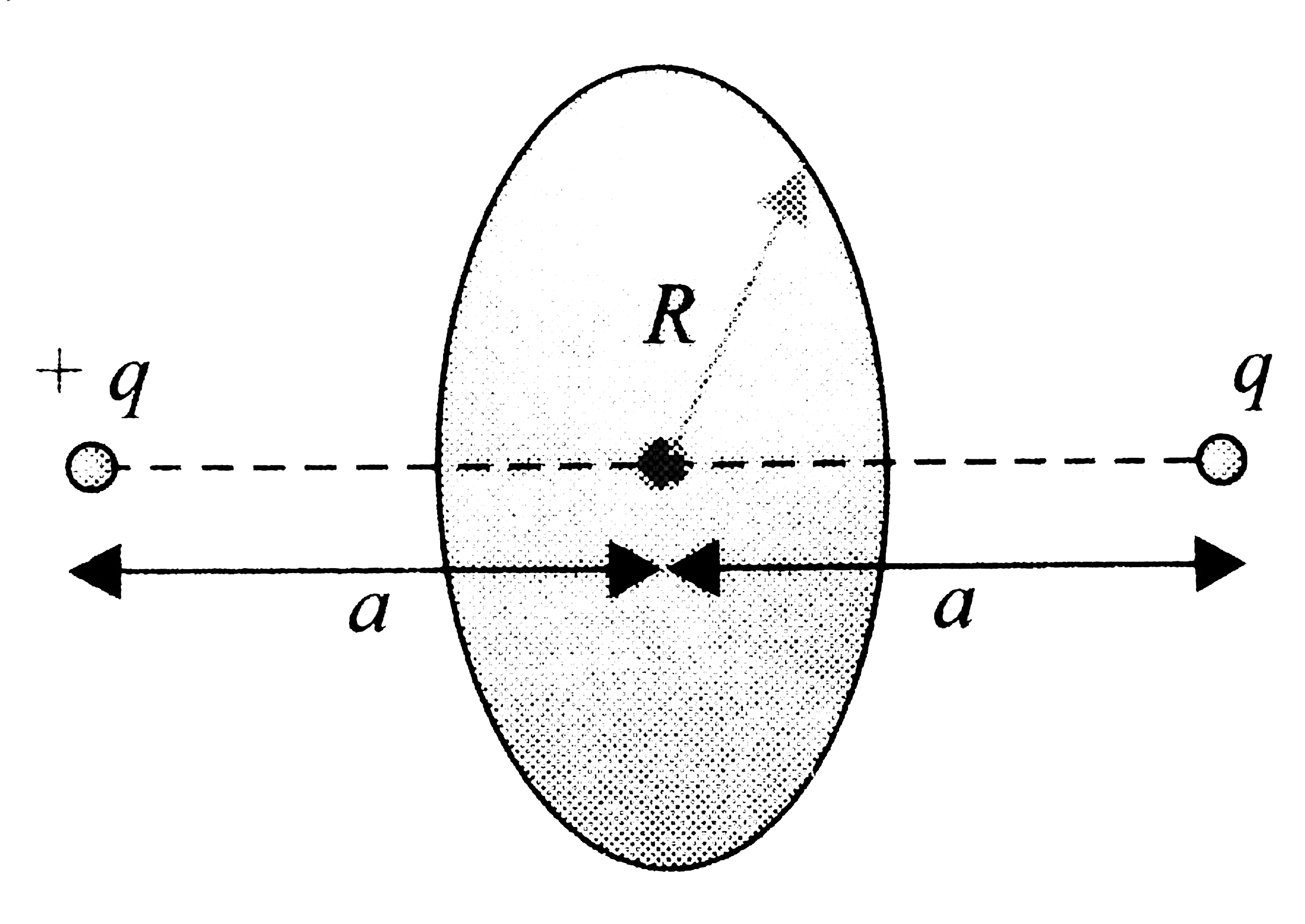A certain charge Q is divided into two parts q and Q−q, wheich are then separated by a cetain distance. What must q be in terms of Q to maximum the electrostatic repulsion between the two charges?
(Q/q)=(4/1)
(Q/q)=(2/1)
(Q/q)=(3/4)
(Q/q)=(5/1)
The correct Answer is:B
To solve the problem of maximizing the electrostatic repulsion between two charges q and Q−q, we can follow these steps:
Step 1: Write the expression for the electrostatic force
The electrostatic force F between two charges q and Q−q separated by a distance d is given by Coulomb's law:
F=kq(Q−q)d2
where k is Coulomb's constant.
Step 2: Simplify the expression
We can rewrite the expression for the force:
F=kQq−q2d2
Since k and d2 are constants, we can focus on maximizing the expression Qq−q2.
Step 3: Differentiate the force with respect to q
To find the value of q that maximizes the force, we need to differentiate F with respect to q and set the derivative equal to zero:
dFdq=ddq(Qq−q2)=Q−2q
Setting the derivative equal to zero gives:
Q−2q=0
Step 4: Solve for q
From the equation Q−2q=0, we can solve for q:
2q=Q⟹q=Q2
Step 5: Conclusion
Thus, to maximize the electrostatic repulsion between the two charges, the charge q must be:
q=Q2
The electrostatic force F between two charges q and Q−q separated by a distance d is given by Coulomb's law:
F=kq(Q−q)d2
where k is Coulomb's constant.
We can rewrite the expression for the force:
F=kQq−q2d2
Since k and d2 are constants, we can focus on maximizing the expression Qq−q2.
To find the value of q that maximizes the force, we need to differentiate F with respect to q and set the derivative equal to zero:
dFdq=ddq(Qq−q2)=Q−2q
Setting the derivative equal to zero gives:
Q−2q=0
From the equation Q−2q=0, we can solve for q:
2q=Q⟹q=Q2
Thus, to maximize the electrostatic repulsion between the two charges, the charge q must be:
q=Q2
Topper's Solved these Questions
- ELECTROSTATICSBOOK - DC PANDEY ENGLISHCHAPTER - ELECTROSTATICSEXERCISE - JEE Advanced
44 Videos
- ELECTROSTATICSBOOK - DC PANDEY ENGLISHCHAPTER - ELECTROSTATICSEXERCISE - Comprehension
36 Videos
- ELASTICITYBOOK - DC PANDEY ENGLISHCHAPTER - ELASTICITYEXERCISE - Medical entrances s gallery
21 Videos
- EXPERIMENTSBOOK - DC PANDEY ENGLISHCHAPTER - EXPERIMENTSEXERCISE - Subjective
15 Videos
Similar Questions
A certain charge Q is divided into two parts q and Q−q, which are then separated by a certain distance. What must q be in terms of Q to maximum the electrostatic repulsion between the two charges?
View SolutionCharge Q is divided into two parts which are then kept some distance apart . The force between them will be maximum if the two parts are
View SolutionA charge Q is divided into two charge q and Q-q. The value of q such that the force between them is maximum is
View SolutionTwo point charges Q and -Q/4 are separated by a distance x.

View SolutionTwo point charges +Q and -Q are separated by a certain distance. The resultant electric field is parallel to the line joining the charges at the points
View SolutionTwo point charges q and -q are separated by a distance 2a. Evaluate the flux of the electric field strength vector across a circle of radius R.

View SolutionTwo charge +q and −q are placed at distance r. Match the following two columns when distance between them is charged to r'.

View SolutionTwo unlike charges of magnitude q are separated by a distance 2d. The potential at a point midway between them is
View SolutionTwo parallel metal plates having charges +Q and −Q face each other at a certain distance between them.If the plates are now dipped in kerosene oil tank ,the electric field between the plates will
View SolutionTwo parallel metal plates having charges +Q and −Q face each other at a certain distance between them.If the plates are now dipped in kerosene oil tank ,the electric field between the plates will
View Solution
